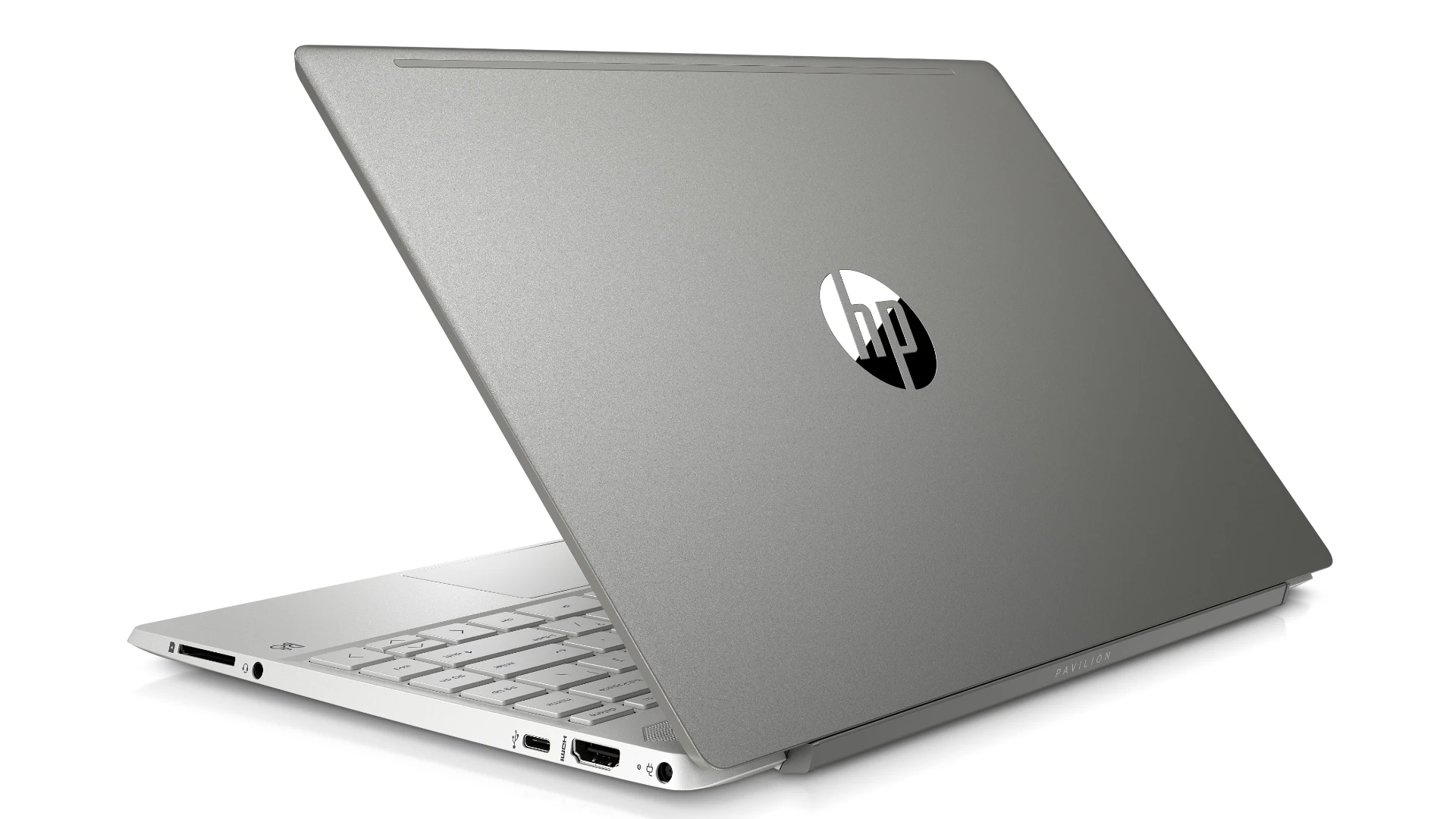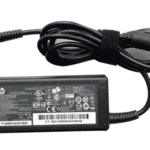Connecting to Wi-Fi on your HP laptop is simple once you know where to find the right settings. Whether you’re setting up a new laptop or trying to connect to a different network, the process takes just a few clicks. On HP laptops running Windows 10 or 11, you can connect to Wi-Fi by clicking the network icon in the taskbar, selecting your network, entering the password, and clicking Connect.
Many people struggle with finding the right settings to connect their HP laptops to wireless networks. If you don’t see any available networks, you might need to check if your Wi-Fi adapter is enabled. You can do this by looking for the Wi-Fi icon in the taskbar or going to Settings > Network & Internet > Wi-Fi and making sure the toggle is switched on.
Sometimes you may need to manually add a network if it doesn’t appear in the list of available networks. This is common for hidden networks or when you’re in an area with many overlapping signals. In Windows, you can add a network by going to Settings > Network & Internet > Wi-Fi > Manage known networks and clicking “Add a new network” where you’ll enter the network name and security details.
Ways To Connect To WiFi on an HP
Connecting to WiFi on an HP laptop typically involves the following steps, depending on your Windows operating system:
Method 1: Using the Quick Settings (Windows 10 & 11)
- Turn on WiFi:
- Windows 11: Click the network icon (it looks like a globe if not connected or WiFi waves if connected) located in the bottom-right corner of your screen, next to the clock. Then, click the WiFi symbol to turn it on.
- Windows 10: Click the network icon (usually a WiFi icon or a globe if not connected) in the bottom-right corner of your screen (system tray). A panel will appear; click the Wi-Fi tile to toggle it on. If it’s already blue, WiFi is enabled.
- Select a Network: Once WiFi is turned on, a list of available wireless networks will appear. Click on the name (SSID) of the WiFi network you want to connect to.
- Enter the Password (if required): If the network is secured, you’ll be prompted to enter the network password (also known as the WiFi key or security key). Type the password carefully and click Connect.
- Automatic Connection: You might see a checkbox that says “Connect automatically.” If you check this box, your laptop will automatically connect to this network whenever it’s in range in the future.
Method 2: Using the Settings App (Windows 10 & 11)
- Open Settings:
- Click the Start button (Windows logo) in the bottom-left corner.
- Click the Settings icon (gear icon).
- Navigate to Network & Internet:
- In the Settings app, click on Network & Internet.
- Select WiFi:
- In the left-hand menu, click on Wi-Fi.
- Turn on WiFi:
- Make sure the Wi-Fi slider at the top is turned On.
- View Available Networks:
- Click on Show available networks. This will display a list of nearby WiFi networks.
- Connect to a Network:
- Click on the name of the network you want to join.
- Click the Connect button.
- Enter the password if prompted and click Next or OK.
Other Ways to Turn On WiFi (Older HP Laptops):
- Physical Switch: Some older HP laptops have a physical switch on the side or front of the laptop to turn WiFi on or off. Look for a switch with a WiFi symbol.
- Function Key: Many HP laptops use a function key (usually one of the F keys at the top of the keyboard, like F12 or F8) to toggle WiFi. You might need to press and hold the Fn key while pressing the WiFi function key. Look for a WiFi symbol on one of the F keys.
Troubleshooting Tips if You Can’t Connect:
- Check if WiFi is turned on: Make sure WiFi is enabled using one of the methods above.
- Airplane Mode: Ensure Airplane mode is turned off. You can usually find this in the Quick Settings panel. When Airplane mode is on, all wireless connections are disabled.
- Restart your laptop and router: Sometimes, a simple restart of both your laptop and your WiFi router can resolve connection issues. Unplug your router for about 30 seconds, then plug it back in and wait for it to fully restart before restarting your laptop.
- Check the WiFi password: Double-check that you are entering the correct WiFi password. Passwords are case-sensitive.
- Move closer to the router: If the WiFi signal is weak, try moving your laptop closer to the wireless router.
- Update your WiFi drivers: Outdated or faulty WiFi drivers can cause connection problems. You can find the latest drivers on the official HP Support website for your specific laptop model.
- Use the Windows Network Troubleshooter:
- Windows 11: Go to Settings > System > Troubleshoot > Other troubleshooters > Internet Connections > Run.
- Windows 10: Go to Settings > Update & Security > Troubleshoot > Additional troubleshooters > Internet Connections > Run the troubleshooter.
- Reset Network Settings: This should be a last resort as it will remove all your saved WiFi passwords.
- Windows 11: Go to Settings > Network & Internet > Advanced network settings > Network reset > Reset now.
- Windows 10: Go to Settings > Network & Internet > Status > Network reset > Reset now.
If you continue to have issues, you can find more specific troubleshooting steps and support on the official HP Support website: https://support.hp.com/. You can search for your specific laptop model for tailored assistance.
Key Takeaways
- Connect to Wi-Fi quickly by clicking the network icon in the taskbar, selecting your network, and entering the password.
- Make sure your Wi-Fi adapter is turned on through Settings > Network & Internet if no networks appear.
- For hidden networks, manually add them through the “Manage known networks” option in Wi-Fi settings.
Preparing Your HP Laptop for Wi-Fi Connection
Before connecting to Wi-Fi, you need to make sure your HP laptop is properly prepared. This involves checking that Wi-Fi is enabled on your device and ensuring your operating system is up to date.
Ensuring Wi-Fi is Enabled on Your HP Laptop
Many HP laptops come with physical Wi-Fi buttons or keyboard shortcuts that control the wireless connection. Look for an airplane icon or wireless symbol on your function keys (usually F12). Press this key while holding the Fn button to toggle Wi-Fi on or off.
If you don’t see any lights indicating Wi-Fi is active, check Windows settings. Click the network icon in the taskbar (bottom right corner). If Wi-Fi appears grayed out, click it to enable it.
Some HP models have a physical switch on the side or front of the laptop. Make sure this switch is in the “on” position if your laptop has one.
You can also check through Windows settings by:
- Clicking the Start button
- Selecting Settings (gear icon)
- Choosing “Network & Internet”
- Selecting “Wi-Fi” on the left menu
- Toggling the switch to “On”
Updating Windows to Ensure Compatibility
Outdated systems can cause Wi-Fi connection problems. Keeping Windows updated helps ensure your wireless adapter works properly.
To check for Windows updates:
- Click the Start button
- Select Settings (gear icon)
- Choose “Update & Security”
- Click “Check for updates”
Install any available updates, especially those related to network adapters. Some updates may require a restart to complete installation.
If you’re experiencing persistent connection issues, try updating your network adapter drivers. Open HP Support Assistant by searching for it in the Start menu. Select your computer and look for network-related updates.
Windows sometimes disables network adapters to save power. Right-click the Start button, select “Device Manager,” and expand “Network adapters.” Check if your wireless adapter is enabled.
Accessing Network and Internet Settings
Finding your way to Windows network settings is the first step to connecting your HP laptop to WiFi. These settings let you view available networks and manage your connection options.
Navigating to Network and Sharing Center
On Windows 10 and 11, you can access network settings in several ways. The quickest method is through the Settings app. Click on the Start menu, then select “Settings” (the gear icon). From there, choose “Network & Internet.” This opens the main networking control panel.
For Windows 10 users, you’ll see Wi-Fi listed on the left side menu. Windows 11 has a slightly different layout, but Wi-Fi options remain easily accessible.
You can also reach these settings through the taskbar. Click the network icon in the system tray (bottom right corner). This shows available networks and has a link to “Network & Internet settings” at the bottom.
Selecting the Appropriate Network Adapter
Once in network settings, you need to ensure your Wi-Fi adapter is properly set up. If you don’t see any wireless networks, your adapter might be disabled or have issues.
To check your adapter status, open Device Manager by right-clicking the Windows logo and selecting “Device Manager.” Expand the “Network adapters” section. Your Wi-Fi adapter should be listed there. If you see a yellow warning icon, the adapter needs attention.
If the adapter seems fine but you still have connection problems, try the troubleshooter. Go to Settings > Network & Internet > Status > Network troubleshooter. Windows will automatically check for common issues.
For persistent problems, you might need to update your adapter drivers through HP Support Assistant or the HP website.
Connecting to a Wi-Fi Network
Connecting your HP laptop to a Wi-Fi network is simple once you know the steps. You’ll need to locate your network first, then enter the correct password to establish a connection.
Locating Your Wi-Fi Network SSID
To find and connect to your Wi-Fi network, first locate the network icon in the taskbar. This icon appears in the bottom-right corner of your screen and looks like signal bars.
Click on this icon to see a list of available Wi-Fi networks. Each network has a name (SSID) that helps you identify it. Your home or office network should appear in this list.
If you don’t see any networks, check if Wi-Fi is turned on. You can do this by:
- Opening Settings (click the Windows logo, then the settings icon)
- Selecting “Network & Internet”
- Making sure the Wi-Fi toggle is switched to “On”
If networks still don’t appear, check Device Manager. Right-click the Windows logo, select “Device Manager,” and look under “Network adapters” to ensure your Wi-Fi adapter is working properly.
Entering Wi-Fi Password
Once you’ve found your network, click on its name in the list of available networks. Windows will prompt you to enter the network password.
Type in the correct password (also called passphrase or network key). This password is case-sensitive, so make sure to enter it exactly as it appears.
If you’re connecting to your home network but don’t know the password, you can usually find it:
- On the back or bottom of your router
- In the documentation that came with your internet service
- By asking the network administrator
After entering the password, click “Connect” or “Next.” Your laptop will attempt to join the network. A successful connection is indicated when the Wi-Fi icon in your taskbar shows active signal bars.
If you get an error message saying “Can’t connect to this network,” try clicking “Forget” for that network in your Wi-Fi settings, then attempt to reconnect with the password.
Troubleshooting Wi-Fi Connection Issues
Sometimes Wi-Fi connections on HP laptops can stop working due to software issues or hardware problems. Windows provides built-in tools that can help you quickly diagnose and fix these problems.
Using the Network Troubleshooter
Windows includes a helpful tool that can automatically find and fix common Wi-Fi connection problems on your HP laptop. This troubleshooter checks for issues like incorrect network settings or driver problems.
To use the Network Troubleshooter:
- Right-click on the network icon in the taskbar (usually at the bottom-right corner of your screen)
- Select “Troubleshoot problems” from the menu
- Wait while Windows analyzes your network connection
You can also access the troubleshooter through Settings:
- Press Windows key + I to open Settings
- Go to Network & Internet
- Scroll down and select “Network troubleshooter”
The troubleshooter will run tests and try to fix any problems it finds. It might restart your wireless adapter or adjust settings to restore your connection.
Performing a Network Reset
When the troubleshooter doesn’t solve your Wi-Fi problems, a network reset can be a more powerful fix. This option returns all network settings to their original state.
To perform a network reset:
- Open Settings (Windows key + I)
- Select Network & Internet
- Scroll down and click on “Network reset”
- Click the “Reset now” button
- Your computer will restart to complete the process
This reset removes all network adapters and reinstalls them with default settings. It also clears other network components like VPN connections and firewall rules.
After your laptop restarts, try connecting to your Wi-Fi network again. You may need to re-enter your Wi-Fi password and reconnect to any saved networks.
Seeking Professional Assistance
Sometimes WiFi connection problems need expert help. When you’ve tried basic fixes and still can’t connect your HP laptop to WiFi, it might be time to reach out to professionals.
Contacting HP Tech Support
HP offers several ways to get help with WiFi connection issues. You can call their support line directly at 1-800-474-6836 or visit support.hp.com to start a live chat. Before contacting them, have your laptop’s serial number ready—it’s usually on a sticker on the bottom of your device.
HP also provides an HP Support Assistant tool pre-installed on most laptops. This program can:
- Run diagnostics on your WiFi hardware
- Check for and install updated drivers
- Connect you directly to HP support
For urgent issues, HP offers premium support options with faster response times. Support agents can often remotely access your laptop (with your permission) to fix WiFi problems directly, saving you time and frustration.
Consulting with Verified Laptop Technicians on JustAnswer
JustAnswer connects you with certified laptop technicians who can help solve WiFi issues quickly. These verified experts have experience with HP laptops and can provide personalized troubleshooting steps.
To use JustAnswer:
- Create an account and post your specific WiFi problem
- Choose an expert based on their ratings and experience
- Pay a fee to get personalized help
The advantage of JustAnswer is getting one-on-one attention from professionals who understand complex WiFi issues. Many technicians respond within minutes, and you only pay if their solution helps.
These experts can guide you through advanced fixes like checking network adapter settings or identifying hardware failures that might be causing your connection problems.
Frequently Asked Questions
Connecting to WiFi on an HP laptop can sometimes be challenging. These common questions cover basic connection steps, troubleshooting methods, and solutions for different Windows versions.
What steps should be followed to connect a HP laptop to a WiFi network on Windows 10?
To connect your HP laptop to WiFi on Windows 10, first click on the network icon in the taskbar at the bottom-right corner of your screen. This icon looks like a computer or signal bars.
A list of available networks will appear. Find your WiFi network name in the list and click on it.
Click the “Connect” button and enter your network password when prompted. Check the “Connect automatically” box if you want your laptop to join this network whenever it’s in range.
How can WiFi be enabled on a HP laptop running Windows 7?
For Windows 7 HP laptops, click on the network icon in the system tray (bottom-right corner). This opens a list of available networks.
Make sure the wireless function is turned on. Many HP laptops have a physical switch or a function key (often F12 or another F-key with a wireless symbol).
Select your network from the list, click “Connect,” and enter your security key or passphrase when prompted.
Why is an HP laptop unable to detect available WiFi networks?
When an HP laptop can’t find WiFi networks, the wireless adapter might be disabled. Check if Airplane mode is turned off by clicking on the Action Center icon in the taskbar.
The WiFi driver might need updating. Open Device Manager by right-clicking the Windows logo, select “Device Manager,” then expand “Network adapters” to check for issues.
Sometimes the router is the problem. Try restarting your router and moving closer to it to improve signal strength.
What to do when an HP laptop with Windows 11 doesn’t connect to WiFi?
For Windows 11 HP laptops that won’t connect, first check if WiFi is enabled by clicking on the network icon in the taskbar and ensuring WiFi is turned on.
Try restarting your laptop, as this often resolves temporary connection issues.
Run the network troubleshooter by right-clicking the network icon in the taskbar and selecting “Troubleshoot problems.”
How can a WiFi network be manually added to a HP laptop?
To manually add a WiFi network, click on the network icon in the taskbar and select “Network & Internet settings.”
Click on “WiFi” in the left menu, then scroll down and click “Manage known networks.” Select “Add a new network.”
Enter the network name (SSID), choose the security type, and enter the password. Check “Connect automatically” if desired, then click “Save.”
What troubleshooting methods can resolve WiFi connectivity issues in HP laptops?
Restart your laptop and router as this clears temporary issues that might affect connectivity.
Update your wireless drivers through Device Manager or HP Support Assistant, which can fix compatibility problems.
Reset your network settings by going to Settings > Network & Internet > Status > Network reset.
Check for interference from other electronic devices, as microwaves, cordless phones, and Bluetooth devices can disrupt WiFi signals.







